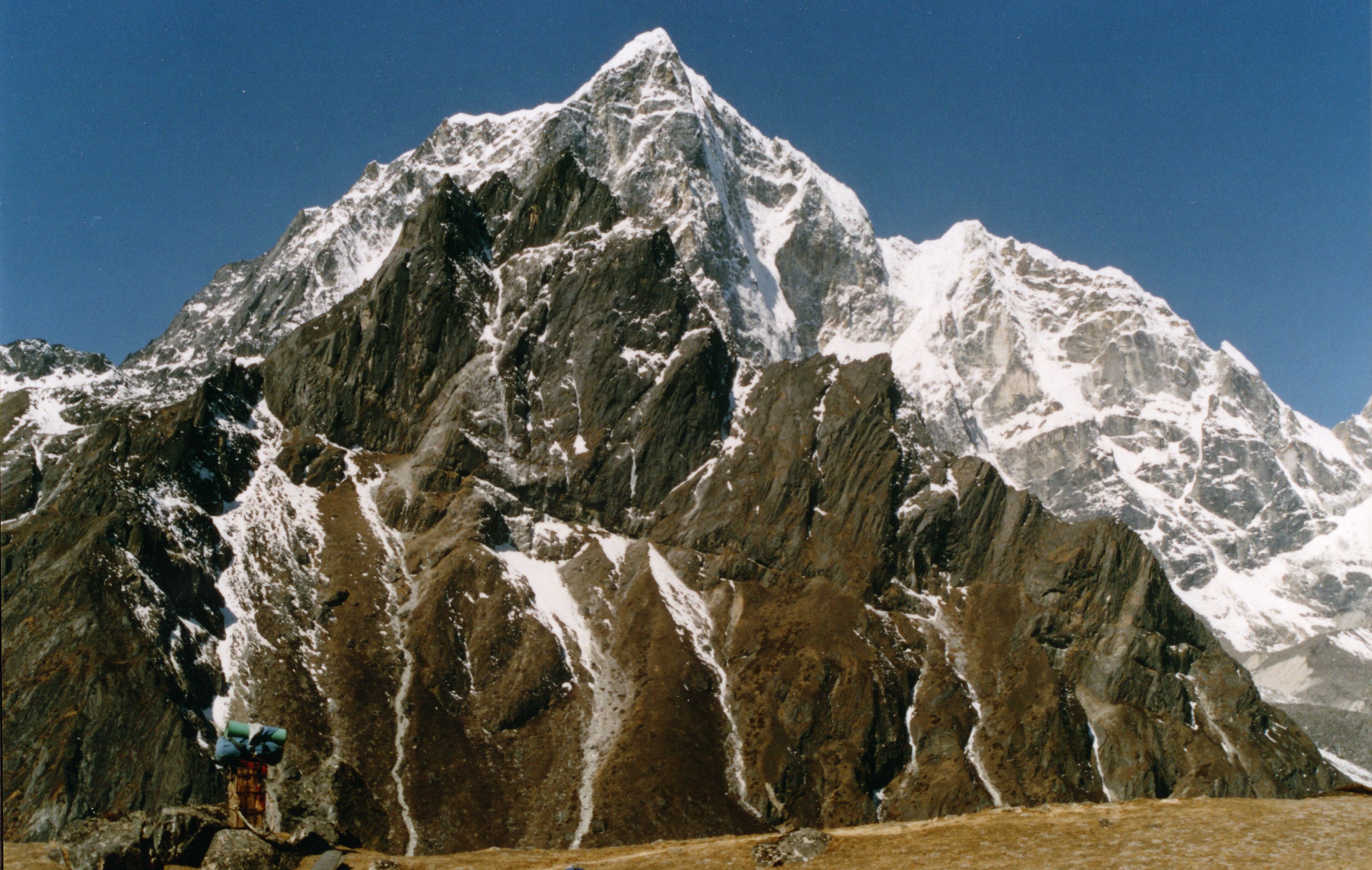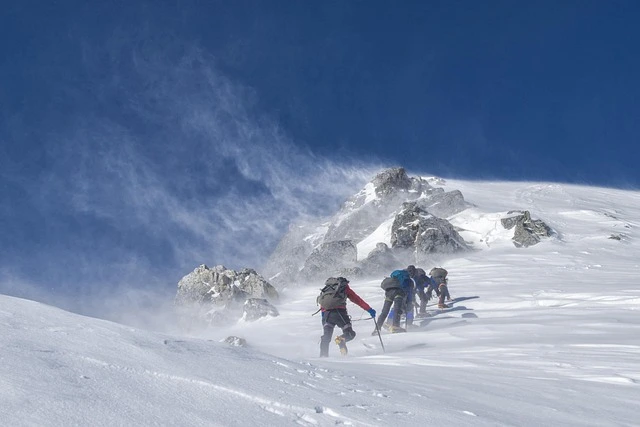Amongst the beating heart of Nepal lies an experience that is quintessentially poised between awe-inspiring natural beauty and cultural richness—the Langtang Valley Trek. This holiday experience offers travelers an opportunity to view stunning vistas of breathtaking Himalayan peaks, cross centuries-old villages, and uncover the rich heritage of native Tamang civilization. Whether you are a seasoned trekker or a high-end tourist seeking a luxurious Himalayan experience, the Langtang Valley Trek is designed to thrill and energize all aspects of your journey. In this complete guide, we will walk you through the top highlights, comprehensive itinerary, cost approximation, important FAQs, and insider tips that will make you ready for one of the most unforgettable trekking adventures of your life.
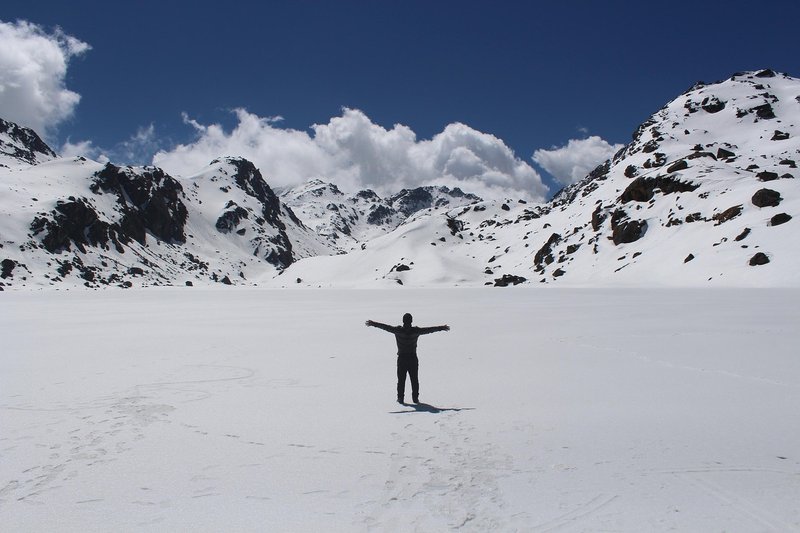
Why Choose the Langtang Valley Trek?
The Langtang Valley Trek is among the numerous trekking experiences in Nepal that is not like the others by virtue of its perfect blend of natural and cultural heritage. While all other treks emphasize physical activity, the Langtang Valley Trek invites you to a world where the pristine beauty of the Himalayas meets the indigenous lifestyle of the locals. The following are some reasons why the Langtang Valley Trek should find a place in your bucket list:
- Scenic Diversity: Since the terrain shifts from dense jungle to height, the trekking crew is bestowed with an array of vistas. The region is renowned for providing panoramic vistas, as sheer Langtang Lirung (7,227m), Yala Peak, and Tserku Ri peak give way, so that each bend on the trail gives way to another wonder of nature.
- Cultural Connection: Other than the physical challenges of the trek, you have the opportunity to live the local culture. The trek passes through Tamang villages with traditional ways, ancient monasteries, and local cuisine—such as yak cheese (Chhurpi)—that offer a firsthand glimpse of the area's culture.
- Wildlife and Natural Heritage: The Langtang National Park, whose population includes elusive animals like the rare red panda, is a bonus dimension for nature enthusiasts. The diversified plants and animals make up a living palette that complements the tough beauty of high-altitude land.
- Balanced Challenge: With moderate daily walking schedules—generally 5 to 7 hours—a wide range of trekking enthusiasts can enjoy this adventure without compromising on the thrill or the immersive experience.
Highlights of the Trek
The Langtang Valley Trek offers a host of unforgettable experiences that blend adventure, culture, and natural splendor. Here’s a closer look at what you can expect on this incredible journey:
1. Panoramic Himalayan Views
One of the salient features of the trek is the panoramic view. Think of standing at a level where the extended chain of the Himalayas stretches out before you, and peaks like Langtang Lirung, Yala Peak, and Tserku Ri border the horizon. The theatrical contrast of light and shadow over the rock slopes is a heaven for nature and photography enthusiasts with shooting opportunities on every step.
2. Cultural Immersion in Tamang Villages
The trek is not just one of physical challenges; it's also a chance to experience the region's vibrant culture. As you trek through picturesque Tamang villages, you'll have the opportunity to greet friendly locals who are only too eager to share their customs with you. Whether you're observing the art of yak cheese making or participating in lively cultural festivals, every moment adds depth to your travel experience to an incredible extent.
3. Unique Wildlife Encounters
While the high-altitude environment might seem barren at first glance, the region teems with life. The Langtang National Park, a sanctuary for diverse flora and fauna, offers trekkers the chance to spot rare species like the red panda. This is not only a treat for wildlife enthusiasts but also a testament to the conservation efforts in the region.
4. A Blend of Adventure and Tranquility
The Langtang Valley Trek perfectly balances exhilarating physical activity with moments of serene reflection. Whether you are navigating challenging mountain passes or relaxing in the comfort of a teahouse after a long day’s hike, every moment is carefully curated to ensure a well-rounded experience that nourishes both body and soul.

Langtang Valley Trek Cost Overview
Langtang Valley Trek has a cost structure for various budgets for individual and group trekkers. The expense covers most of your basic requirements, including accommodation in local teahouses, meals, local transportation (shared buses or jeeps), permits, and services of experienced guides. While the total expense may appear to be competitive, pay attention to the fact that trekking in distant high-altitude regions involves a greater cost of logistics, such as food, water, and other essentials to be shipped.
Tiered Pricing Based on Group Size
Many trekking operators offer clear group discounts on the Langtang Valley Trek. Here’s a sample pricing structure from one of the reputable local agencies (prices are in USD):
- Solo Traveler (1 Pax): Approximately US$650 per person
- Small Group (2–7 Pax): Approximately US$550 per person
- Larger Group (8–15 Pax): Approximately US$499 per person
These tiered rates encourage group travel by lowering the per-person cost as the number of trekkers increases. The discounts come from shared expenses—such as transportation and guide fees—which become more economical when spread across more people.
Shorter Trek Option: Budget-Friendly Alternative
For trekkers who are short on time or looking for a less intensive experience, many companies offer a shortened version of the Langtang trek. For example, a 6-Day Langtang Valley Trek might be available at a lower price point:
- Short Trek (6 Days):
- Solo Traveler: Approximately US$550 per person
- Small Group (2–7 Pax): Approximately US$480 per person
- Larger Group (8–15 Pax): Approximately US$450 per person
This shorter option covers a similar route but with fewer days on the trail, making it a great alternative for those who have limited time while still offering the opportunity to experience the best views and cultural highlights of the valley.
What’s Included and Excluded
Inclusions:
- Transport:
- Airport pickup and drop-off in Kathmandu
- Shared jeep rides between Kathmandu and Syabrubesi (the trek’s starting point)
- Accommodation:
- 7 nights’ lodging in local teahouses (or basic lodges) along the trek route
- Options vary by altitude: from Syabrubesi and Lama Hotel to Langtang Village and Kyanjin Gompa
- Meals:
- Full board with breakfast, lunch, and dinner during the trek
- A mix of traditional Nepali dishes (like dal bhat) and select international options
- Permits and Paperwork:
- Guiding and Support:
- Services of an experienced, licensed trekking guide
- Assistance from porters (if required; note that porter costs may be extra based on weight and group size)
Exclusions:
- Travel Insurance:
- It is essential to purchase your own comprehensive travel and rescue insurance.
- Personal Expenses:
- Extra snacks, beverages (except those provided), and personal gear rentals are not included in the package.
- Optional Extras:
- Upgraded accommodation (private rooms, attached bathrooms, etc.) if not preselected
- Additional charges for hot showers or electricity usage (charging devices)
- Additional Porter Charges:
- Porter fees are typically separate; for instance, an extra cost of around US$190 may apply if you need porter support for heavy loads.
- Private Transportation:
- Private jeep services or upgraded vehicles, if not included in the standard package.
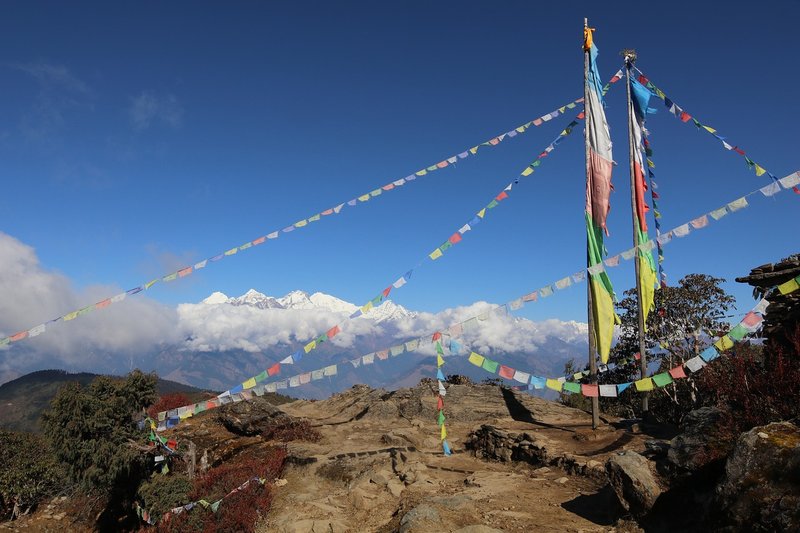
Additional Costs to Consider
When budgeting for your Langtang Valley Trek, keep in mind these potential additional expenses:
- Tips and Gratuities:
- Tipping guides and porters is customary; budgeting around 10% of the trek cost is recommended.
- Gear Rental or Purchases:
- If you don’t bring your own gear (e.g., sleeping bag, trekking poles, waterproof clothing), rentals from Kathmandu can add to your overall cost.
- Miscellaneous Fees:
- Extra charges for Wi-Fi, hot showers, and charging your devices at higher altitude teahouses.
- Optional Activities:
- If you choose to add on day hikes (such as a Tserkuri or Kyanjin Ri summit hike) or cultural tours in Langtang Village, these might incur additional fees.
Budgeting Tips for Your Trek
- Book Early:
- Pre-book your teahouse accommodation and transportation during peak seasons to secure the best rates.
- Travel Light:
- Reducing your load can help lower porter fees and make the trek more comfortable.
- Group Up:
- Consider trekking with a group to benefit from the lower per-person cost in the tiered pricing structure.
- Plan for Extras:
- Set aside an emergency budget for unexpected costs such as additional gear rentals or unforeseen permit fees.
- Compare Packages:
- Look at several local operators and compare what is included in their packages. Transparent pricing with clear inclusions and exclusions can help you avoid hidden fees.
Exclusive Perks
- Free Rental of Trekking Poles: To enhance your trekking experience and reduce physical strain, the package includes the complimentary rental of trekking poles.
- Cultural Dinner in Langtang Village: As part of the immersive experience, an exclusive cultural dinner is organized in Langtang Village. This dinner is not only a gastronomic delight but also an opportunity to engage with local traditions, music, and dance.
By offering a full package with the essentials and a few niceties, the Langtang Valley Trek may be able to provide you with the enjoyment of simply reveling in the experience without worrying about thoughtfully logistical details. That sort of attention to quality and value is the reason that it remains so very well-liked among travelers. Below is yet another section describing special teahouse facilities and eating on the Langtang Valley Trek. This one will be an expansion of the multi-layered schedule and provide you with specific information about what to expect in food and accommodations along the trail. You can also check out our detailed guide on Langtang Valley Cost breakdown.

Food and Accommodation: Teahouse Experience & Food on the Trek
The Langtang Valley Trek is as much about immersing yourself in the local culture as it is about conquering rugged mountain trails. A vital part of that cultural immersion comes through the food and lodging provided by local teahouses. Here, you’ll find a blend of traditional Nepali hospitality with a dash of international comfort—all set against breathtaking Himalayan backdrops.
Teahouse Experience
Teahouses are the backbone of accommodation along the Langtang Valley Trek. These modest guesthouses are run by local families and offer trekkers a place to rest, refuel, and interact with the welcoming community.
Basic Amenities and Room Setup
- Room Types:
At lower altitudes—such as in Syabrubesi and Lama Hotel—you can find teahouses offering simple twin-share rooms with basic wooden beds, blankets, and pillows. As you ascend to higher areas like Kyanjin Gompa, facilities tend to be more basic, often with shared bathrooms and communal areas. Although the conditions are rustic, many trekkers appreciate the authenticity and the unbeatable mountain views from these lodges.
- Hygiene & Comfort:
While bedding is provided, it’s wise to bring your own sleeping bag (especially in colder months) since the blankets might not suffice at high altitudes. Some teahouses also offer additional services such as hot showers—for a small fee—and limited charging facilities or Wi-Fi, although these amenities become scarcer as you climb higher.
Unique Features and Cultural Insights
- Communal Dining:
Teahouses typically feature a warm dining hall where you can share meals and stories with fellow trekkers and locals. These spaces are often adorned with traditional Nepali décor and open to panoramic views of the surrounding peaks, creating an intimate setting that underscores the communal nature of trekking in Nepal.
- Local Hospitality:
The warmth of the teahouse owners is a highlight of the experience. Many guests recall being invited to partake in local traditions, from informal chats over tea to learning about the regional customs and even participating in small cultural festivities. The personal touches offered by these family-run establishments enrich the overall trekking experience.
Cost and Booking Tips
- Pricing:
Teahouse rates vary by altitude and season. In lower villages like Syabrubesi, expect rates to range between $5 to $20 per night. Higher up, particularly around Kyanjin Gompa, prices can be slightly higher due to the increased cost of transporting supplies.
- Booking:
During peak trekking seasons (spring and autumn), teahouses can fill up quickly. Pre-booking your lodging—either directly or via your trekking agency—is advisable to ensure you have a spot at your preferred stops along the trail.
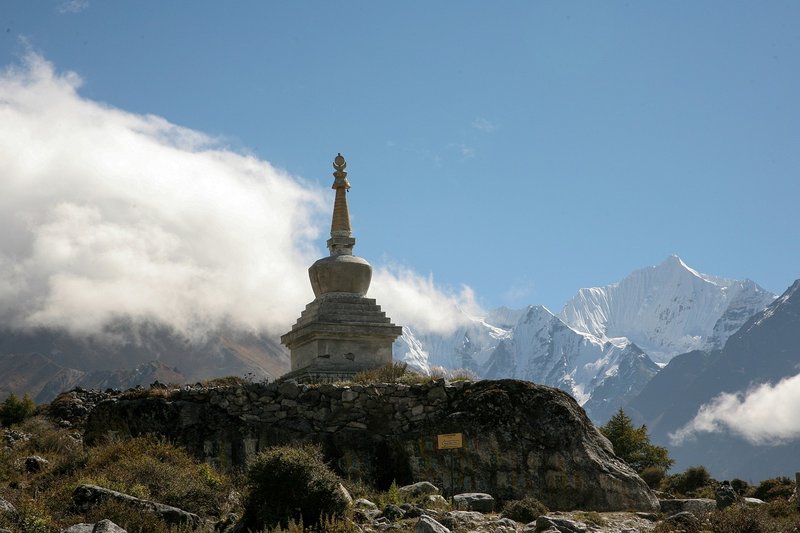
Food on the Trek
The culinary offerings on the Langtang Valley Trek are designed to provide the energy and warmth needed for long days of hiking while showcasing the region’s unique flavors.
Traditional Nepali Fare
- Dal Bhat:
The cornerstone of Nepali cuisine, dal bhat is a wholesome meal featuring steamed rice, lentil soup (dal), and an assortment of vegetable curries. Often served with a side of pickles, this meal is not only nutritious but is offered in unlimited portions at many teahouses—making it a favorite among trekkers for its energy-boosting properties.
- Local Specialties:
Other regional dishes include momos (steamed or fried dumplings), thukpa (Tibetan noodle soup), and dishes such as dhindo (a thick, porridge-like dish made from millet or buckwheat). These items provide a taste of the local culture and are often prepared with fresh, locally sourced ingredients.
Breakfast, Lunch, and Dinner Options
- Breakfast:
Start your day with a hearty meal to fuel your trek. Teahouse breakfasts commonly feature a mix of:
- Porridge or muesli, often served with honey, nuts, or dried fruits.
- Tibetan bread or chapati, sometimes enjoyed with butter and jam.
- Eggs prepared in various styles (omelets, scrambled, or boiled) along with pancakes and hot soups.
- Accompany these with a hot beverage—tea, coffee, or even hot chocolate—to warm up before a chilly morning hike.
- Lunch:
Midday meals are designed to replenish your energy. Apart from the classic dal bhat, many teahouses offer
- Noodles or fried rice for a change of pace.
- Momos, which are not only delicious but also provide a quick protein boost.
- In some teahouses catering to international trekkers, you may also find pasta or even pizza, though these often have a local twist.
- Dinner:
After a strenuous day on the trail, dinner is usually similar to lunch—providing a mix of dal bhat, noodles, and sometimes Western dishes like pasta or pizza. Lighter dinners might be recommended on days following particularly challenging ascents so that your stomach is not overburdened before sleep.
Snacks and Beverages
- Snacks:
To maintain energy levels between meals, many trekkers supplement with energy bars, nuts, and dried fruits. Some teahouses may also offer local snacks such as roasted corn or fresh fruit.
- Beverages:
Staying hydrated is essential at high altitudes. Teahouses typically offer:
- A variety of hot drinks, including different types of tea (black, green, or herbal) and coffee.
- Hot lemon water, which is a popular choice for its refreshing and soothing properties.
- In some cases, locally produced beverages (non-alcoholic) that add to the authentic experience.
- It is advisable to drink boiled or purified water to avoid any waterborne illnesses. Many trekkers carry a reusable water bottle and use water purification tablets to ensure safe hydration (cite[turn0search8]).
Cost Considerations
- Meal Pricing:
Although meals in Kathmandu can be very affordable, prices in the mountains tend to be higher due to transportation costs. On average, expect breakfast to cost between $4–$8 per person, with lunch and dinner ranging from $6–$10 each.
- Local Versus International Options:
While international dishes (like pasta or pizza) might come at a slightly premium, the vast majority of the menu is designed to be both filling and nutritious, supporting the physical demands of high-altitude trekking.
In Summary
Teahouse accommodation and food on the Langtang Valley Trek are an essential component of the trek, providing not just sustenance but also a raw form of Nepali culture. Being exposed to the simple delights of home-style accommodation and wholesome, organic food there keeps the trekkers ahead of themselves and engaged in the true hospitality of the Himalayan locals.
With pre-booked lodges and a leisurely meal schedule, your trek is not just physical—an adventure of cultural immersion whereby every meal and every night shared under the same roof invites you further into the heart of the Himalayas.
Enjoy the trek, enjoy the dinner, and allow the gorgeous landscape and hospitable local
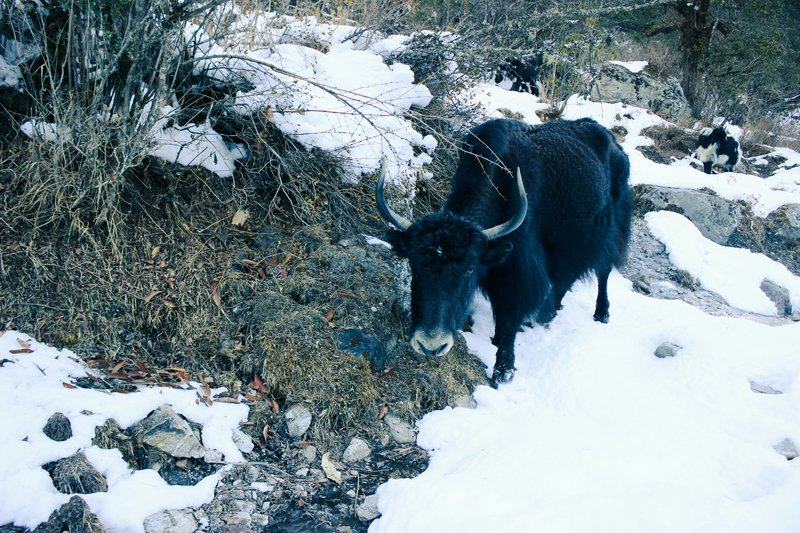
Planning and Preparation Tips for Langtang Valley Trek
Proper preparation is key to a successful trekking experience in the high Himalayas. Here are some essential tips to ensure that you are fully prepared for the Langtang Valley Trek:
Physical Training
- Cardio and Endurance: Begin a training routine several weeks before your trek. Engage in activities such as jogging, cycling, or brisk walking to build stamina.
- Strength Training: Focus on building leg and core strength through exercises like squats, lunges, and step-ups. This will help you manage steep ascents and rugged terrain.
- Altitude Acclimatization: If possible, train at higher altitudes or simulate high-altitude conditions to help your body adjust to lower oxygen levels.
Packing Essentials
- Clothing: Pack layers that can be added or removed according to the temperature changes. Include moisture-wicking shirts, insulated jackets, trekking pants, and waterproof outer layers.
- Footwear: Invest in a pair of sturdy, well-fitted trekking boots. Ensure they are broken in before the trek to prevent blisters.
- Accessories: Don’t forget a hat, gloves, and sunglasses. A quality pair of trekking poles (often provided free with the package) is also essential for stability on uneven terrain.
- Medical Supplies: Carry a basic first aid kit, including altitude sickness medication, pain relievers, and any personal prescriptions.
- Technology: A reliable camera, extra batteries, and portable chargers will help you capture and share the stunning landscapes.
Mental Preparation
- Set Realistic Expectations: Understand that the trek may present challenges such as unpredictable weather and physical fatigue. Embrace the journey with patience and a positive mindset.
- Learn About the Culture: Familiarize yourself with local customs and traditions. A little research about the Tamang community can enrich your interactions and make your cultural experiences more meaningful.
- Stay Flexible: Even with a structured itinerary, remain open to changes. Local weather conditions or trail situations may require adjustments to your plan.
Health and Safety
- Consult a Doctor: Before embarking on a high-altitude trek, get a medical checkup to ensure you are fit for the challenges ahead.
- Hydration and Nutrition: Plan to drink plenty of water and carry high-energy snacks. Proper nutrition is crucial in maintaining energy levels during long days on the trail.
- Travel Insurance: Consider purchasing travel insurance that covers high-altitude trekking and emergency evacuations.
By following these preparation tips, you can minimize risks and maximize your enjoyment throughout the trek.
Cultural Immersion Along the Trail
One of the most enriching aspects of the Langtang Valley Trek is its deep connection to local culture. As you traverse the winding trails, you will have numerous opportunities to engage with the people who call this region home.
Experiencing Tamang Heritage
The Tamang community is known for its vibrant traditions, warm hospitality, and a lifestyle that has remained relatively unchanged for centuries. During your trek, you will visit traditional Tamang villages where
- Local Crafts: Artisans showcase traditional crafts and handiwork, often using techniques passed down through generations.
- Festivals and Rituals: Depending on the time of your visit, you might witness local festivals or rituals that provide insights into the spiritual life of the community.
- Culinary Delights: Local cuisine, which often features yak cheese, a delicacy produced in these high-altitude areas, will tantalize your taste buds and offer a delicious taste of Nepali culture.
Hands-On Experiences
Beyond passive observation, the trek encourages active participation in cultural activities:
- Cooking Workshops: Some itineraries include workshops where you can learn how to prepare traditional dishes using local ingredients.
- Storytelling Sessions: Gather around with local elders who share fascinating stories of the mountains, legends of the land, and historical insights that give context to your surroundings.
- Cultural Dinners: The exclusive cultural dinner in Langtang Village provides an opportunity to interact with locals over shared meals, deepening your understanding of their customs and traditions.
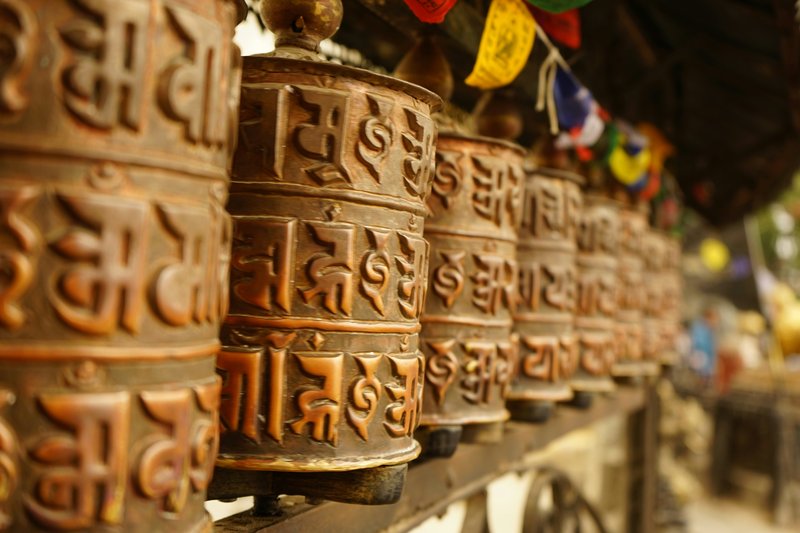
The Role of Monasteries and Spirituality
Scattered along the trekking route are ancient monasteries that serve as spiritual centers for the local communities. Visiting these sites can be a profoundly moving experience:
- Architectural Beauty: The monasteries are not only places of worship but also examples of intricate Himalayan architecture that reflects centuries of tradition.
- Spiritual Reflection: Many trekkers find that the quiet and contemplative atmosphere of these sites offers a moment of pause—a chance to reflect on the journey and the beauty of nature.
- Local Legends: Each monastery is steeped in local lore, and the monks and caretakers often share fascinating stories that add depth to the trek.
By engaging with the cultural aspects of the Langtang Valley Trek, you’ll find that the journey becomes much more than a physical challenge—it transforms into an enriching exploration of history, tradition, and human connection.
Encountering the Himalayan Splendor
The Himalayas have long captivated adventurers, poets, and travelers alike with their sheer scale and sublime beauty. The Langtang Valley Trek is no exception. Here’s what makes the Himalayan environment along this route so unforgettable:
Majestic Peaks
The trek offers unparalleled views of some of the most iconic peaks in the region:
- Langtang Lirung (7,227m): Standing tall as one of the highest summits in the area, Langtang Lirung dominates the skyline and serves as a constant reminder of nature’s grand design.
- Yala Peak and Tserku Ri: These prominent peaks add layers of depth and drama to the landscape, offering photographers and nature enthusiasts an ever-changing canvas of colors and shadows.
Rugged Terrain and Scenic Trails
As you traverse the winding trails, you’ll be treated to a variety of landscapes:
- High-Altitude Meadows: Open expanses where wildflowers bloom, painting the meadows with vivid hues.
- Forested Valleys: Dense forests of pine and rhododendron create a soothing, emerald canopy that contrasts with the rocky outcrops.
- Mountain Passes: Each pass conquered brings a new perspective on the sprawling Himalayan expanse, providing both a physical challenge and a visual reward.
The Spiritual Essence of the Mountains
For many trekkers, the Himalayas evoke a sense of spirituality and introspection:
- Mindful Trekking: The quiet majesty of the mountains inspires reflection and a deeper appreciation for life’s natural wonders.
- Nature’s Lessons: The rugged terrain teaches resilience and the importance of harmony between man and nature.
This immersive experience in the Himalayan environment is a key highlight of the trek, leaving an indelible mark on your heart and soul.
Wildlife, Flora, and the Natural Environment
The Langtang Valley is a treasure trove of biodiversity and natural beauty, making it a paradise for nature lovers. The region’s rich ecological tapestry is showcased in every aspect of the trek:
Unique Wildlife Encounters
Langtang National Park, a protected area that forms an integral part of the trekking route, is home to a diverse array of wildlife:
- Red Pandas: These elusive creatures, known for their striking red fur and playful demeanor, are among the many species you may encounter during your trek.
- Birdlife: The region is a haven for bird watchers, with a variety of endemic and migratory species gracing the skies with their vibrant plumage.
- Other Fauna: From small mammals to a range of insects that play vital roles in the ecosystem, the natural environment is a dynamic and interdependent web of life.
Rich Flora
The flora in the Langtang Valley changes dramatically with altitude, providing trekkers with a visual feast:
- Rhododendrons: During the blooming season (March–May), these bright flowers transform the trails into a kaleidoscope of colors.
- Forest Understory: The dense foliage and wild vegetation create a lush environment that is both serene and invigorating.
- High-Altitude Vegetation: As you ascend, the vegetation transitions to hardy alpine species adapted to the colder, harsher conditions.
Conservation Efforts
Local and international efforts to conserve the natural environment are evident throughout Langtang National Park:
- Sustainable Tourism: Initiatives are in place to ensure that trekking and tourism have minimal impact on the fragile ecosystem.
- Community Involvement: Local communities actively participate in conservation, fostering a sense of stewardship towards their natural heritage.
For wildlife and nature enthusiasts, the Langtang Valley Trek offers not just a physical journey but an educational and transformative experience that highlights the importance of preserving our natural world.
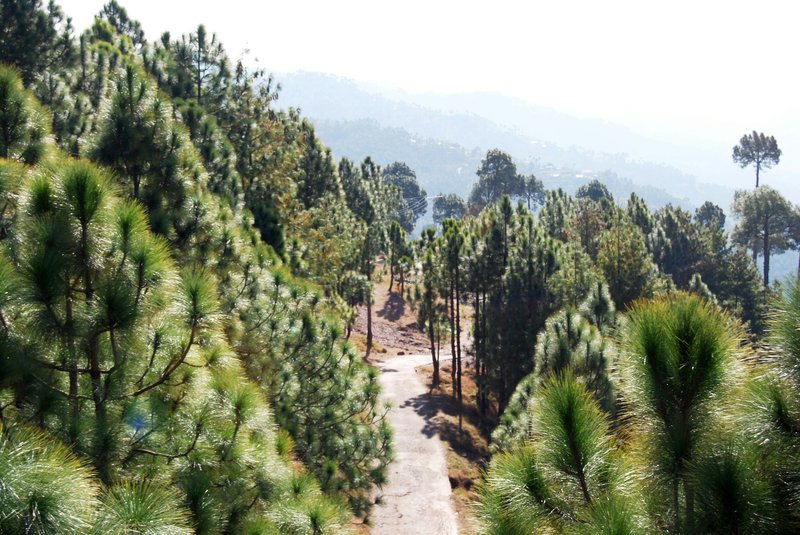
When to Embark on Your Adventure
Timing is crucial for maximizing the enjoyment of your trek. The two primary seasons for trekking in the Langtang region each offer distinct advantages:
Spring (March–May)
- Floral Abundance: The trails are lined with blooming rhododendrons and other wildflowers, adding bursts of color to the rugged landscape.
- Mild Weather: Temperatures are generally pleasant, making it an ideal time for long days of trekking without extreme heat or cold.
- Vibrant Culture: Spring festivals in local villages often coincide with the trekking season, offering additional cultural experiences.
Autumn (September–November)
- Crystal Clear Skies: This season is renowned for its clear skies, which provide unrivaled views of the Himalayan peaks and panoramic vistas.
- Stable Weather: The post-monsoon period ensures dry, stable conditions on the trails, ideal for trekking and outdoor photography.
- Cultural Celebrations: Many traditional events and local gatherings occur during this time, enriching your cultural immersion.
Choosing the right season depends on your preferences—whether you value the riot of colors in spring or the crisp clarity of autumn, both seasons promise an unforgettable adventure. You can also check out our detailed blog on the best time to trek Langtang Valley Trek.
Trekking Essentials and Packing List for Langtang Valley Trek
A successful trek in the Himalayas requires careful preparation and packing. Here is a detailed packing list to help you ensure that you have everything you need for the Langtang Valley Trek:
Clothing
- Base Layers: Moisture-wicking shirts and thermal leggings for varying temperatures.
- Mid Layers: Fleece or lightweight insulated jackets that provide warmth during chilly mornings and evenings.
- Outer Layers: Waterproof and windproof jackets and pants to protect against unpredictable weather.
- Trekking Pants and Shorts: Durable and comfortable options for long days on the trail.
- Headgear: A hat or cap for sun protection, as well as a beanie or warm hat for colder conditions.
- Gloves: Insulated gloves for high-altitude cold and lighter gloves for milder days.
Footwear
- Trekking Boots: Sturdy, waterproof boots that offer ankle support and have been well broken-in.
- Camp Shoes: Comfortable sandals or sneakers for evenings in the teahouses.
- Socks: Moisture-wicking trekking socks, plus extra pairs in case of wet conditions.
Accessories
- Trekking Poles: Often provided free with the package, but it’s good to have your own if you prefer.
- Backpack: A comfortable, well-fitted backpack (35–50 liters) with rain cover.
- Daypack: A small pack for day trips and carrying essentials like water and snacks.
- Water Bottles/Hydration System: Ensure you have the capacity to carry enough water, especially during long treks.
Health and Safety Items
- First Aid Kit: Including blister treatment, bandages, antiseptic wipes, and personal medications.
- Altitude Sickness Medication: Consult your doctor for suitable options and dosages.
- Sunscreen and Lip Balm: High SPF protection is crucial at high altitudes.
- Insect Repellent: To protect against bugs, especially in the lower, forested areas.
Technology and Navigation
- Camera/Smartphone: For capturing the stunning vistas, along with extra batteries and memory cards.
- Map and Guidebook: Although guides are provided, having a personal copy can be useful.
- Portable Charger/Power Bank: To keep your devices powered throughout the day.
Having a well-organized packing list ensures that you are comfortable and prepared for the varying conditions of the trek, allowing you to focus on the experience rather than minor inconveniences.
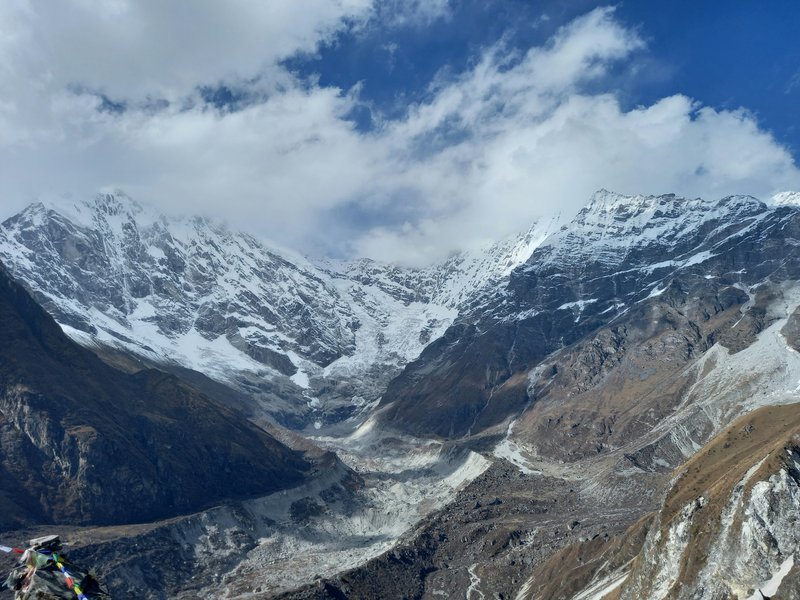
Safety, Permits, and Local Guidelines
Trekking in the Himalayas is an exhilarating experience, but safety must always remain a priority. Here’s what you need to know about staying safe and adhering to local guidelines on the Langtang Valley Trek:
Permits and Documentation
- Trekking Permits: All necessary permits are included in the trek package. Ensure you carry copies of your permits and identification at all times.
- Travel Insurance: Invest in comprehensive travel insurance that covers high-altitude trekking and potential medical emergencies.
- Local Regulations: Respect local customs and regulations. Familiarize yourself with basic Nepali phrases and etiquette to foster positive interactions with the local communities.
Health and Safety Measures
- Acclimatization: Follow the recommended schedule to allow your body to adjust to the high altitude. Listen to your body and don’t hesitate to inform your guide if you feel unwell.
- Hydration and Nutrition: Maintain proper hydration and consume energy-rich foods throughout the trek.
- Weather Preparedness: Be prepared for sudden weather changes by carrying appropriate clothing and protective gear.
- Emergency Contacts: Ensure you have access to emergency contacts, and always inform someone of your daily itinerary.
By adhering to these safety guidelines and remaining aware of your surroundings, you can minimize risks and ensure a safe, enjoyable trekking experience.
Final Thoughts and Conclusion
The Langtang Valley Trek is more than just a physical challenge—it is a journey of discovery, both outward and inward. The blend of towering Himalayan vistas, vibrant cultural experiences, and encounters with unique wildlife creates an adventure that resonates on multiple levels. Whether you are drawn to the panoramic views of peaks like Langtang Lirung, eager to immerse yourself in the traditions of the Tamang community, or simply seeking a break from everyday life in nature’s embrace, this trek promises an experience that will stay with you forever.
Recap of Key Points
- Panoramic Beauty: Enjoy breathtaking views of some of the highest peaks in the region, including Langtang Lirung, Yala Peak, and Tserku Ri.
- Cultural Richness: Engage with local traditions through visits to ancient monasteries, traditional villages, and exclusive cultural dinners.
- Nature and Wildlife: Experience the diverse ecosystem of Langtang National Park, where even elusive species like the red panda make an appearance.
- Comprehensive Itinerary: An 8-day journey that blends moderate physical activity with ample opportunities for cultural exploration and relaxation.
- Value for Money: With packages starting from $799, the trek offers excellent value, including permits, professional guidance, teahouse stays, and more, as cited.
- Expert Planning: Detailed planning, a carefully curated packing list, and essential safety measures ensure that you are fully prepared for the adventure ahead.
Your Himalayan Adventure Awaits
Embarking on the Langtang Valley Trek is more than simply exploring a new destination; it is an invitation to rediscover your sense of wonder, to connect deeply with nature, and to experience the enduring spirit of the Himalayas. With every step along the trail, you will forge memories that last a lifetime—from the serene beauty of dawn breaking over the mountains to the joyous laughter shared around a communal teahouse table. Book now for the journey that you will cherish for the lifetime with Himalayan Hero Adventures.











